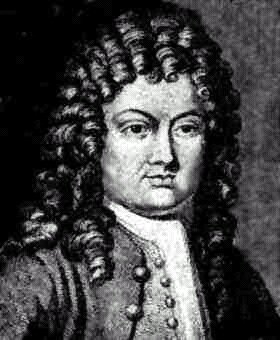Brook Taylor facts for kids
Quick facts for kids
Brook Taylor
|
|
|---|---|

Brook Taylor (1685-1731)
|
|
| Born | 18 August 1685 |
| Died | 29 December 1731 (aged 46) London, England
|
| Resting place | St Ann’s, Soho |
| Citizenship | English |
| Alma mater | St John's College, Cambridge |
| Known for | Taylor's theorem Taylor series Finite difference Integration by parts |
| Scientific career | |
| Fields | Mathematics |
| Institutions | St John's College, Cambridge |
| Academic advisors | John Machin and John Keill |
Brook Taylor (born August 18, 1685 – died December 29, 1731) was an important English mathematician. He is most famous for creating Taylor's theorem and the Taylor series. These mathematical ideas are very useful in a field called mathematical analysis.
Contents
Early Life and Education
Brook Taylor was born in Edmonton, which was then in Middlesex, England. His father was John Taylor, and his mother was Olivia Tempest.
In 1701, he started studying at St John's College, Cambridge. He earned his law degrees in 1709 and 1714. Taylor studied mathematics with teachers like John Machin and John Keill.
Key Mathematical Discoveries
One of Taylor's first big achievements was solving a complex math problem about the "center of oscillation." This work was published in 1714.
In 1715, Taylor published a very important book called Methodus Incrementorum Directa et Inversa. This book introduced a new area of advanced mathematics called "calculus of finite differences." He used these new ideas to understand how vibrating strings move. He also wrote about astronomical refraction, which is how light bends when it passes through the Earth's atmosphere.
This same book also contained what is now known as Taylor's theorem. For many years, people didn't fully understand how important this theorem was. But in 1772, another famous mathematician, Joseph-Louis Lagrange, realized its value. Lagrange called it "the main foundation of differential calculus."
Taylor also wrote a book in 1715 called Linear Perspective. In this book, he explained the rules of perspective in drawing and art. His writing was sometimes a bit hard to understand, so other mathematicians later helped explain his ideas more clearly.
Work with the Royal Society
Taylor became a member of the Royal Society in 1712. This is a famous group of scientists. In the same year, he helped decide a disagreement between two very important scientists, Isaac Newton and Gottfried Leibniz. Taylor also worked as the secretary for the Royal Society from 1714 to 1718.
Later Life and Legacy
After 1715, Taylor became more interested in philosophy and religion. He wrote some papers on these topics, but they were not finished.
Taylor was one of the few English mathematicians who could keep up with the famous Bernoulli family, who were also brilliant mathematicians. However, his writings were sometimes difficult to follow because he didn't always explain his ideas fully.
Taylor's health started to get worse in 1717. He got married in 1721, but his wife sadly died in childbirth. His son also did not survive. He later remarried in 1725. His second wife also died in childbirth in 1730, but his daughter, Elizabeth, survived.
In 1729, Taylor inherited his family's estate. He died at the age of 46 on December 29, 1731, in London.
Selected Writings
After Taylor's death, his grandson, Sir William Young, published a book of his writings called Contemplatio Philosophica in 1793. This book included a biography of Taylor and letters from other famous people.
Taylor also published several shorter papers in a scientific journal called Phil. Trans. These papers included his experiments on magnetism and capillary attraction (how liquids move in narrow spaces). In 1719, he released an improved version of his book on perspective, New Principles of Linear Perspective.
Tribute
There is an impact crater on the Moon named Taylor in honor of Brook Taylor. It was named in 1935.
Images for kids
See also
 In Spanish: Brook Taylor para niños
In Spanish: Brook Taylor para niños



